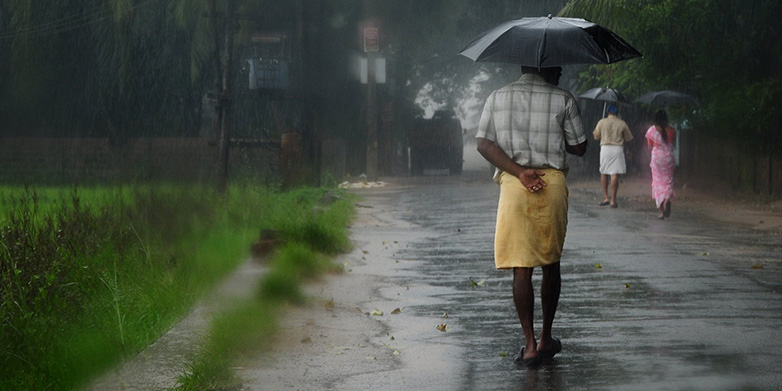Understanding changes in extreme precipitation
An ETH study explores why the increase in extreme precipitation is not the same across every region. This paves the way toward improved regional climate projections.

Most climate scientists agree that heavy rainfall will become even more extreme and frequent in a warmer climate. This is because warm air can hold more moisture than cold air, resulting in heavier rainfall.
However, the involved mechanisms are complex and the increase in extreme precipitation varies in space, as noted by Stephan Pfahl, climate scientist at ETH Zurich and lead author of a paper just published in the journal Nature Climate Change: “The level of atmospheric moisture is just one factor influencing the distribution and intensity of extreme precipitation. Other factors also play a key role – especially when it comes to regional variability.”
Analysis of contributing factors
To better understand regional variations in extreme precipitation, Stephan Pfahl and his co-authors Erich Fischer and Paul O’Gorman from the Massachusetts Institute of Technology (MIT) therefore decomposed the existing projections into their individual components: the contribution of increasing atmospheric moisture on the one hand, and the contribution of weaker or stronger vertical wind velocities on the other hand. This approach gave the researchers a deeper understanding of the changes in extreme precipitation predicted by the models for individual regions.
However, the study also highlights weaknesses in existing projections. While all the models simulate increasing moisture content in a very similar way, their projections of vertical wind velocities in certain regions differ substantially. Decomposing the respective contributions can therefore lead to more accurate climate predictions. “A clearer understanding of the reasons for stronger or weaker updrafts is extremely important. We now know where we need to focus in order to further reduce the uncertainties in regional projections,” stresses Pfahl.
Updrafts create an uneven pattern
Taken on its own, increasing atmospheric moisture would produce a relatively homogeneous pattern: it would enhance extreme precipitation events across the globe. However, regional tendencies towards stronger or weaker vertical wind velocities result in a far more variable picture.
Particularly in the equatorial Pacific or in the Asian monsoon region, strong increases in upward wind velocities produce even heavier downpours, while they tend to yield a decrease in extreme precipitation over many parts of the subtropical oceans. Pfahl reckons it is quite plausible that some ocean regions could experience decreases in extreme rainfall: “Already today, the vertical wind velocities in these regions are weak, transporting only low amounts of moisture upward. This inevitably means less heavy rainfall.” According to the models, these upward wind velocities will decrease further in a warmer climate in future, so that extreme precipitation will become weaker and less common.
Moist air over Central Europe
By overlaying the two components, however, the researchers have a better understanding of where rising temperatures are more likely to produce more frequent and more extreme precipitation. Over Central Europe, for example, the increase in atmospheric moisture content is the dominant factor and leads to much heavier downpours. The new decomposition shows that the upward wind velocities will hardly change, except in the summer, even assuming global warming of up to four degrees by the end of this century. Across the Mediterranean, however, changes in updrafts could be critical. They will probably become weaker, thus reducing the frequency and strength of extreme precipitation.
“Our research gives us a better understanding of the processes that influence the regional pattern of extreme precipitation in a warmer climate,” Pfahl concludes.
Reference
Pfahl S, O´Gorman PA, Fischer EM: Understanding the regional pattern of projected future changes in extreme precipitation. Nature Climate Change Advance Online Publication (AOP) doi: external page 10.1038/nclimate3287